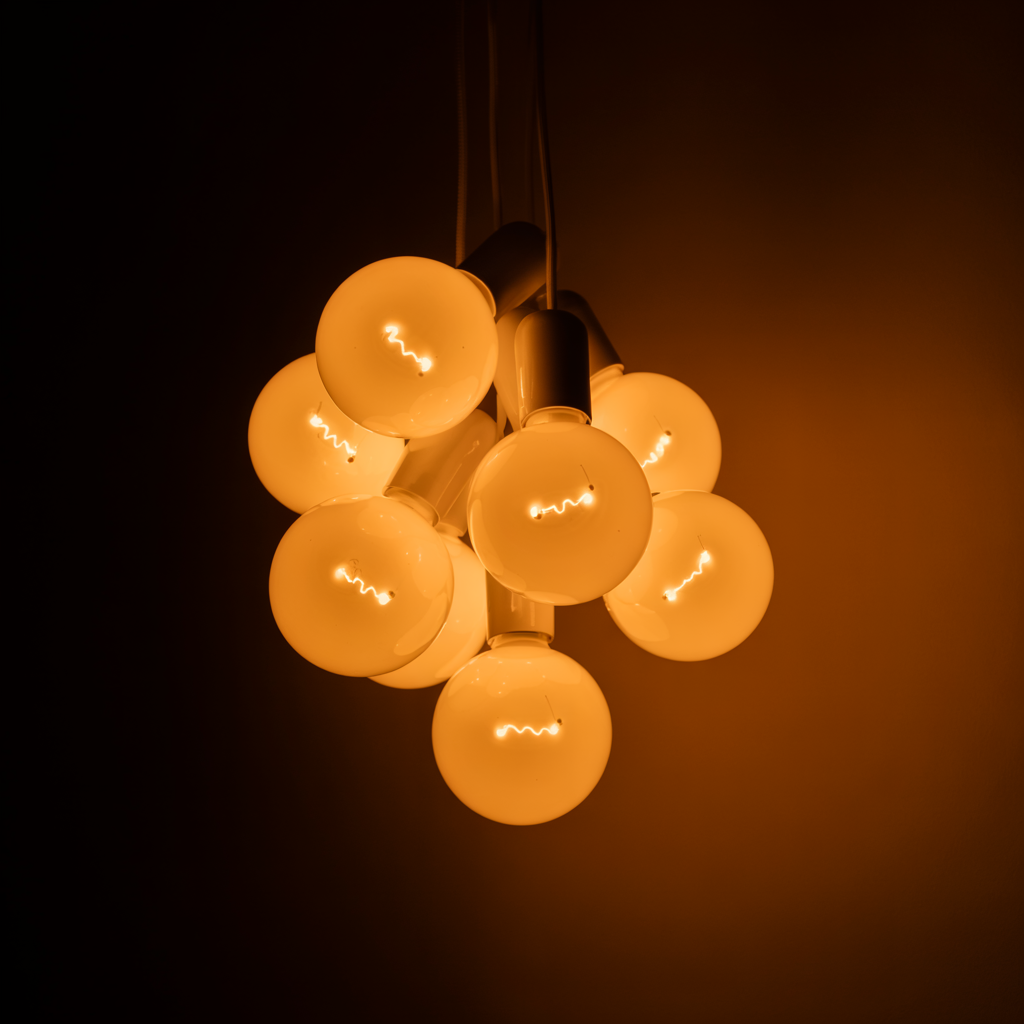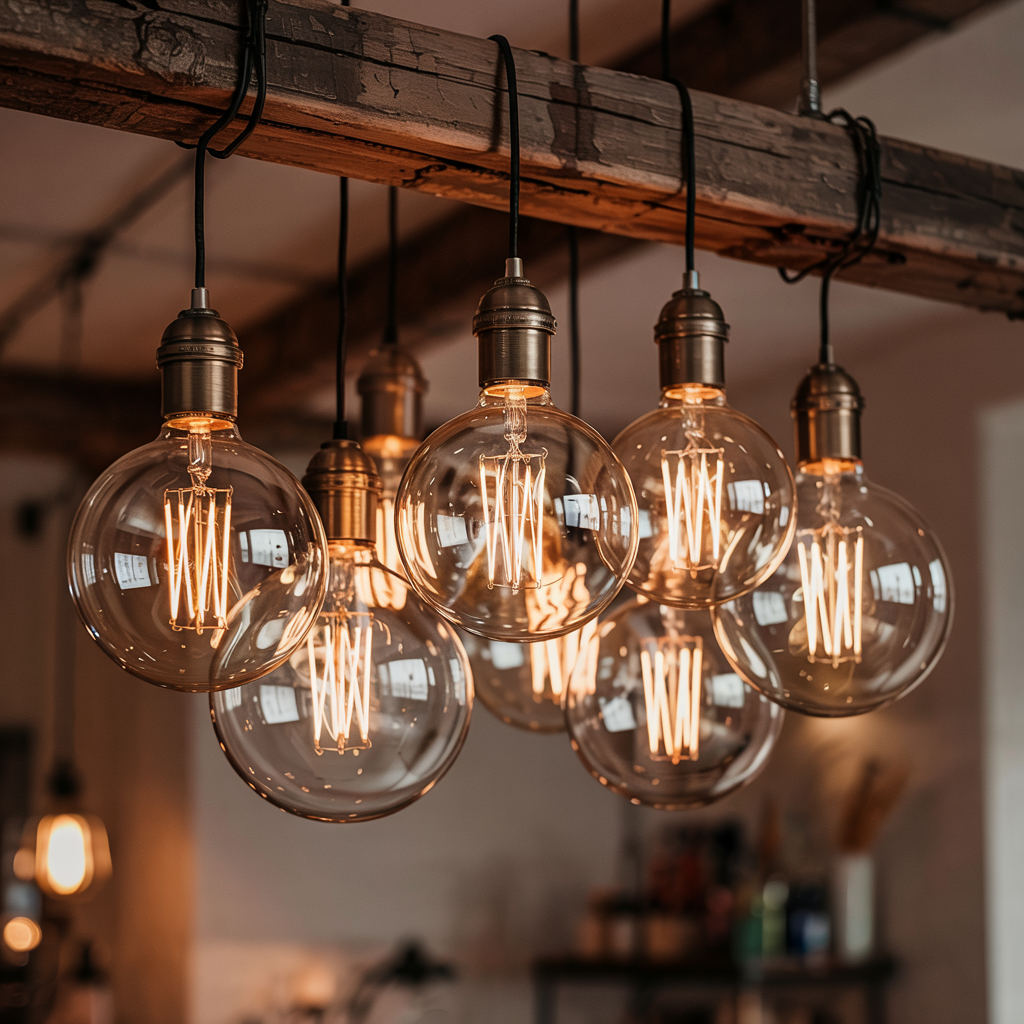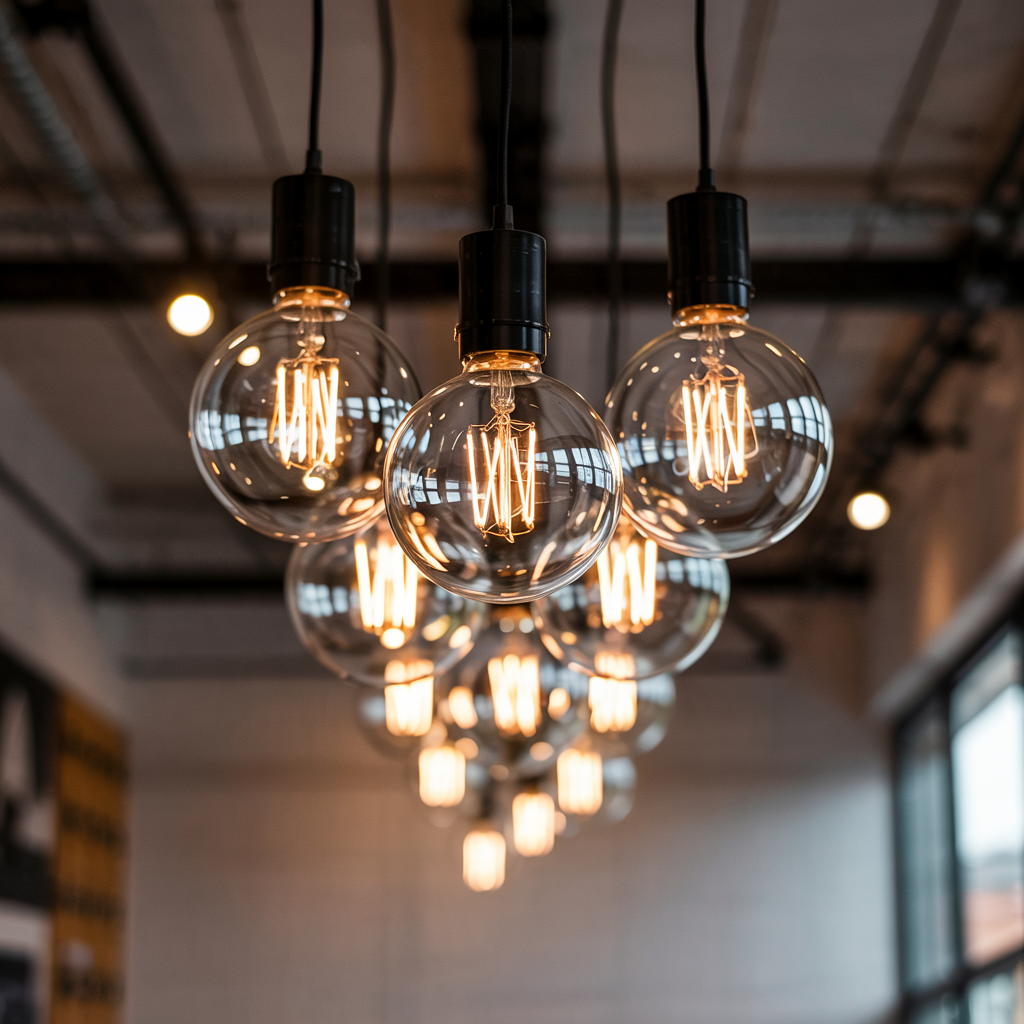Choosing The Perfect Living Room Lighting: What Color Light Bulb for Living Room?
Choosing the right lighting for your living room can dramatically impact its ambiance, functionality, and overall aesthetic. This guide explores the crucial role of light bulb color temperature in creating the perfect atmosphere for relaxation, entertaining, or simply enjoying your space. We’ll cover everything you need to know about choosing the best What color light…
Choosing the right lighting for your living room can dramatically impact its ambiance, functionality, and overall aesthetic. This guide explores the crucial role of light bulb color temperature in creating the perfect atmosphere for relaxation, entertaining, or simply enjoying your space. We’ll cover everything you need to know about choosing the best What color light bulb for living room? to suit your needs and preferences. You’ll learn about color temperature, different bulb types, and how to select the ideal light for various activities and moods. Let’s illuminate the path to perfect living room lighting!
Color temperature is measured in Kelvin (K). A lower Kelvin value indicates warmer light (more yellow or orange), while a higher Kelvin value indicates cooler light (more white or blue). Think of it like this:
a candle flame is around 1800K (very warm), while the sun at midday is closer to 5000K (very cool).
What Color Light Bulb for Living Room?
A warm white light bulb (2700K to 3000K) works best for living rooms. It creates a cozy, relaxing atmosphere that’s easy on the eyes. Use soft white LEDs or incandescent-style bulbs to match most décor and provide comfortable lighting for reading, chatting, or watching TV.
Warm White Light Bulbs (2700K – 3000K)

Creating a Cozy Atmosphere
Warm white light is ideal for creating a relaxing and inviting ambiance. It mimics the soft glow of incandescent bulbs and is perfect for living rooms where you want to unwind, read a book, or watch television. This is a popular choice for creating a homey and comfortable feel.
Read More: Glow Up High: 10 Stunning Vaulted Ceiling Lighting Ideas
Neutral White Light Bulbs (3500K – 4100K)
A Balanced Approach
Neutral white light provides a balanced and versatile option, suitable for a wide range of activities. It’s bright enough for tasks requiring good visibility but still maintains a relatively comfortable warmth. This is great for multi-purpose living rooms.
Cool White Light Bulbs (4100K – 5000K)

Bright and Energetic
Cool white light offers bright, crisp illumination, ideal for tasks requiring precision and focus. However, it can feel a bit sterile or clinical for a purely relaxing living room environment. It’s best suited for rooms where you need bright, clear light.
Different Types of Light Bulbs
Incandescent, LED, CFL, and Halogen
Understanding the different types of bulbs is crucial. Incandescent bulbs are energy-inefficient but produce a warm, pleasant glow. LED (Light Emitting Diode) bulbs are energy-efficient and long-lasting, offering various color temperatures. CFL (Compact Fluorescent Lamp) bulbs are also energy-efficient but can contain mercury. Halogen bulbs are brighter than incandescent but consume more energy.
Read More: How to Choose Dining Room Lighting? The Ultimate Guide To Choosing The Perfect Lighting
Choosing the Right Bulb for Your Activities

Reading, Watching TV, Entertaining
For reading, warm white (2700K-3000K) is ideal for reducing eye strain. Watching TV might benefit from a slightly cooler temperature (3500K-4100K) for better contrast. Entertaining often calls for adjustable lighting to create different moods throughout the evening.
The Impact of Lighting on Mood
Color Psychology and Lighting Design
The color of light can significantly impact mood. Warm lights promote relaxation and calmness, while cooler lights can be more energizing and stimulating. Consider the overall mood you want to create in your living room when selecting light bulbs.
Layering Your Lighting
Ambient, Task, and Accent Lighting
Effective living room lighting involves layering different types of lighting to create a well-lit and versatile space. Ambient lighting provides overall illumination, task lighting focuses on specific areas (like reading), and accent lighting highlights architectural features or artwork.
Dimmable Light Bulbs and Switches
Creating Adjustable Ambiance
Dimmable light bulbs provide ultimate control over the brightness and ambiance of your living room. Combined with dimmers, you can effortlessly adjust the lighting to suit different moods and activities.
Smart Bulbs and Home Automation
Smart Lighting Technology
Smart bulbs offer features like voice control, color-changing capabilities, and scheduling options, allowing for unparalleled control over your living room’s lighting. Consider Philips Hue or LIFX smart bulbs.
Considering the Size and Shape of Your Living Room
Light Distribution and Room Dimensions
The size and shape of your living room will influence how much light you need and how it should be distributed. Larger rooms might require more light sources, while smaller rooms might benefit from fewer, strategically placed lights.
Budget-Friendly Lighting Solutions
Affordable Options Without Compromising Quality
You don’t need to break the bank to achieve beautiful living room lighting. Many affordable LED bulbs offer excellent quality and energy efficiency.
Eco-Friendly Lighting Options
Energy-Efficient Bulbs and Sustainability
Choosing energy-efficient LED bulbs is not only cost-effective but also environmentally friendly. Reducing energy consumption contributes to sustainability.
Troubleshooting Lighting Problems
Flickering, Dimness, and Bulb Lifespan
Understanding common lighting problems like flickering, dimness, and shorter-than-expected bulb lifespan can save you time and frustration. Often, these issues can be resolved by checking wiring or replacing faulty bulbs.
Maintaining Your Living Room Lighting
Regular Bulb Replacement and Cleaning
Regular bulb replacement is essential to maintain optimal brightness and avoid sudden darkness. Cleaning your light fixtures regularly will also ensure maximum light output.
Frequently Asked Questions
What is the best color temperature for a living room?
The best color temperature for a living room depends on your personal preferences and how you use the space. Warm white (2700K-3000K) is often preferred for relaxation, while neutral white (3500K-4100K) offers a more versatile option.
How many light bulbs do I need in my living room?
The number of light bulbs needed depends on the size of your living room and the desired level of brightness. Consider layering different types of lighting for a well-lit space. A rule of thumb is to calculate lumens needed per square foot, but consider your personal preference and the types of lighting used.
Can I mix different color temperatures of light bulbs?
Mixing different color temperatures is generally possible, but it’s essential to do it thoughtfully. Significant differences in color temperature can create an uneven or jarring effect. It’s often better to stick with a consistent color temperature within a single area.
Are LED bulbs worth the cost?
Yes, LED bulbs are generally considered worth the cost due to their energy efficiency and long lifespan. While the initial investment might be higher, the long-term savings on energy bills and bulb replacements make them a worthwhile investment.
How do I choose the right lumens for my living room?
Lumens measure brightness. The number of lumens you need depends on the size of your room and your desired brightness level. A larger room will generally require more lumens. Refer to packaging and online guides for recommended lumens per square foot.
What is the difference between lumens and watts?
Watts used to measure power consumption; lumens measure brightness. LEDs use far fewer watts to produce the same number of lumens compared to incandescent bulbs, showcasing their superior energy efficiency.
Final Thoughts
Choosing the right light bulb for your living room is a crucial step in creating a space that is both functional and aesthetically pleasing. By understanding the nuances of color temperature, bulb types, and lighting techniques, you can transform your living room into a haven of comfort and style. Remember to consider your personal preferences, activities, and the overall mood you wish to create. Experiment with different options to find the perfect lighting solution that enhances your living experience. Invest in high-quality, energy-efficient bulbs for long-term savings and environmental responsibility. With the right approach, your living room can be a space filled with the perfect amount of light, creating the ideal ambiance for relaxation, entertaining, and everything in between. Start optimizing your living room lighting today!

